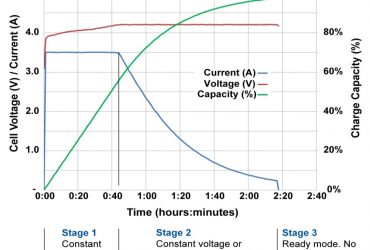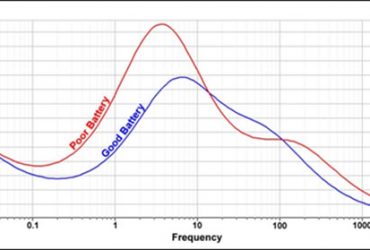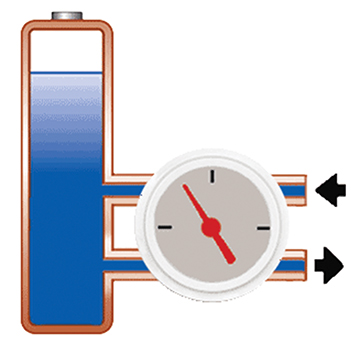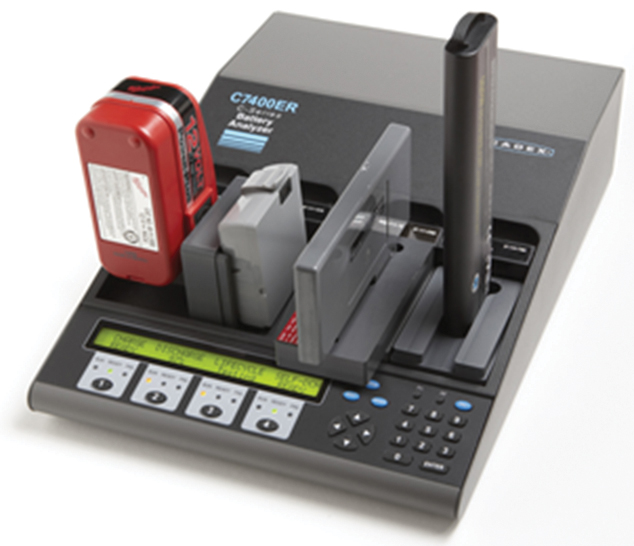Contributed commentary by Isidor Buchmann, CEO & Founder, Cadex Electronics Inc.
Charging a battery is simple but the complexity rises when a parasitic load is present during charge. Depending on battery chemistry, the charge process goes through several stages, and with lithium-ion Stage 1 consists of a constant current (CC) charge that brings the battery to roughly 70 percent state-of-charge (SoC). The cell reaches 4.20V/cell, a common voltage limit for Li-ion, after which Stage 2 continues by applying a constant voltage (CV) charge. The current begins to drop as the battery saturates. Full-charge is reached when the current decreases to typically 0.05C, which is one-twentieth of the rated ampere-hour. Li-ion cannot absorb overcharge and no charge is applied in Stage 3. Figure 1 illustrates typical voltage, current and capacity signatures of the CCCV charge. Read more about How to Charge Li-Ion with a Parasitic Load …











